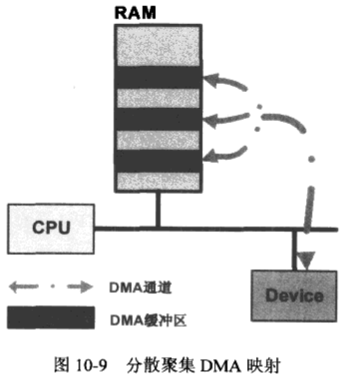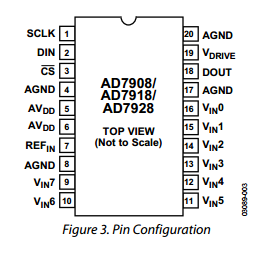前言
Unity3D是一款非常流行的游戏引擎,特别是在开发MMORPG游戏方面,Unity3D具有很大的优势。在Unity3D开发中,ECS(Entity-Component-System)架构已经成为了一种非常流行的设计模式。在本文中,我们将详细介绍基于ECS的技能释放与Buff管理的技术详解和代码实现。
对惹,这里有一个游戏开发交流小组,希望大家可以点击进来一起交流一下开发经验呀!
一、ECS架构
ECS架构是一种将游戏对象(Entity)分解为不同的组件(Component),并通过系统(System)来管理这些组件的设计模式。在ECS架构中,游戏对象(Entity)只是一个ID,它的所有属性和行为由组件(Component)来描述。系统(System)则负责管理组件(Component)之间的关系和逻辑。
ECS架构的优点在于它可以提高游戏的性能。在传统的面向对象的设计模式中,游戏对象(Entity)通常是一个包含了很多属性和行为的复杂对象。这会导致游戏对象(Entity)的创建和销毁都非常耗费资源。而在ECS架构中,游戏对象(Entity)只是一个ID,它的属性和行为都由组件(Component)来描述。这使得游戏对象(Entity)的创建和销毁变得非常简单和高效。
二、技能释放
在MMORPG游戏中,技能释放是非常重要的一个环节。技能释放的过程通常包括以下几个步骤:
1.选择目标
2.计算伤害
3.播放动画
4.触发Buff
在ECS架构中,技能释放的过程可以通过以下几个组件来描述:
1.技能组件(SkillComponent)
技能组件(SkillComponent)描述了一个技能的属性,如技能的名称、伤害、范围等。在技能释放的过程中,系统会根据技能组件(SkillComponent)来计算伤害和范围。
2.目标组件(TargetComponent)
目标组件(TargetComponent)描述了一个技能的目标。在技能释放的过程中,系统会根据目标组件(TargetComponent)来选择技能的目标。
3.动画组件(AnimationComponent)
动画组件(AnimationComponent)描述了一个技能的动画。在技能释放的过程中,系统会根据动画组件(AnimationComponent)来播放技能的动画。
4.Buff组件(BuffComponent)
Buff组件(BuffComponent)描述了一个技能的Buff效果。在技能释放的过程中,系统会根据Buff组件(BuffComponent)来触发Buff效果。
下面是一个基于ECS架构的技能释放的代码示例:
public class SkillSystem : SystemBase
{
protected override void OnUpdate()
{
Entities.ForEach((Entity entity, ref SkillComponent skill, ref TargetComponent target, ref AnimationComponent animation, ref BuffComponent buff) =>
{
// 选择目标
Entity targetEntity = GetTarget(target);
// 计算伤害int damage = CalculateDamage(skill, targetEntity);// 播放动画PlayAnimation(animation);// 触发BuffTriggerBuff(buff, targetEntity);});
}private Entity GetTarget(TargetComponent target)
{// 选择目标的逻辑
}private int CalculateDamage(SkillComponent skill, Entity targetEntity)
{// 计算伤害的逻辑
}private void PlayAnimation(AnimationComponent animation)
{// 播放动画的逻辑
}private void TriggerBuff(BuffComponent buff, Entity targetEntity)
{// 触发Buff的逻辑
}
}
三、Buff管理
在MMORPG游戏中,Buff是非常重要的一个系统。Buff可以增加玩家的属性、增强技能效果、减少敌人的属性等。在ECS架构中,Buff可以通过以下几个组件来描述:
Buff组件(BuffComponent)
Buff组件(BuffComponent)描述了一个Buff的属性,如Buff的名称、Buff的类型、Buff的持续时间等。
属性组件(AttributeComponent)
属性组件(AttributeComponent)描述了玩家或敌人的属性,如生命值、攻击力、防御力等。在Buff的效果下,属性组件(AttributeComponent)的值会发生改变。
Buff状态组件(BuffStateComponent)
Buff状态组件(BuffStateComponent)描述了一个玩家或敌人身上的Buff状态。在Buff的效果下,Buff状态组件(BuffStateComponent)的值会发生改变。
下面是一个基于ECS架构的Buff管理的代码示例:
public class BuffSystem : SystemBase
{
protected override void OnUpdate()
{
Entities.ForEach((Entity entity, ref BuffComponent buff, ref AttributeComponent attribute, ref BuffStateComponent buffState) =>
{
if (buffState.Duration > 0)
{
// Buff持续时间减少
buffState.Duration -= Time.deltaTime;
// Buff效果生效ApplyBuffEffect(buff, attribute, buffState);}else{// Buff效果结束RemoveBuffEffect(buff, attribute, buffState);}});
}private void ApplyBuffEffect(BuffComponent buff, AttributeComponent attribute, BuffStateComponent buffState)
{// 应用Buff效果的逻辑
}private void RemoveBuffEffect(BuffComponent buff, AttributeComponent attribute, BuffStateComponent buffState)
{// 移除Buff效果的逻辑
}
}
四、总结
在本文中,我们介绍了基于ECS架构的技能释放与Buff管理的技术详解和代码实现。通过使用ECS架构,我们可以将游戏对象(Entity)分解为不同的组件(Component),并通过系统(System)来管理这些组件的关系和逻辑。这使得游戏对象(Entity)的创建和销毁变得非常简单和高效。在MMORPG游戏中,技能释放和Buff管理是非常重要的系统。通过使用基于ECS架构的技能释放和Buff管理,我们可以提高游戏的性能,使得游戏更加流畅和稳定。
附:视频教程
MMORPG核心技术:基于ECS的技能释放与Buff管理



